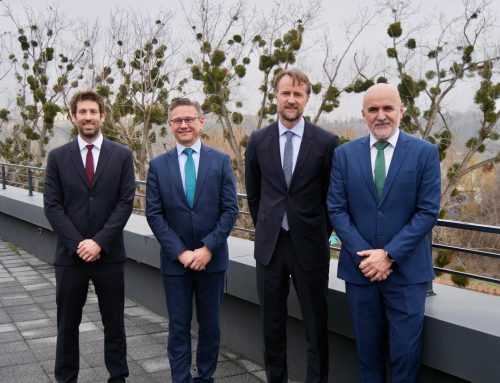The EU is providing immediate, massive and comprehensive support to flood-stricken Serbia through three phased response: rescue effort (still ongoing); humanitarian support (ongoing and expanding); and mid-to-long term reconstruction and prevention (needsa assessment getting under way).
Rescue effort – Immediate response
On Friday, 15 May, in the evening, the EU Civil Protection Mechanism has been activated due to severe flooding that has affected Serbia and Bosnia & Herzegovina. 19 Member States have so far offered assistance through the Mechanism. Bulgaria, Germany, Slovenia, Austria, the Czech Republic, France, Croatia, Slovakia, Denmark, Italy, Romania and Poland have offered rescue boats, high capacity pumps and operational teams to Serbia. Many Member States have decided to allocate bilateral financial and humanitarian assistance.
Most of the EU coordinated assistance arrived to the countries affected during the weekend of 17 and 18 May. The European Union co-financed the assistance transportation costs. Massive assistance includes specialist teams operating high capacity water pumping modules, helicopters, rescue boats, power generators. Sandbags and first aid and relief items (medicines, blankets and tents) have also been provided in huge numbers. In addition, satellite imagery of the affected areas is being produced by the EU thanks to Copernicus satellite.
An eight-strong EU Civil Protection Team arrived to Belgrade on Saturday, 17 May, to assist the national authorities in their response to the wide scale flooding and to support the coordination of the incoming EU assistance. They have been embedded with the Ministry of Interior structures. On 20 May, an EU humanitarian expert has been deployed to Serbia to support the assessment of humanitarian needs on the ground.
The European Commission’s Emergency Response Coordination Centre (ERCC) is in constant contact with Serbia and with the participating states in the EU Civil Protection Mechanism, matching the incoming offers for assistance with needs on the ground. So far, all needs requested by Serbian authorities have been satisfied. More assistance can be made available upon request.
EULEX has donated to Serbia high capacity power generators and other equipment and humanitarian supplies (ready to eat meals, bottled water, field beds and sleeping bags). A heavy lift helicopter is operating from Belgrade airport shoulder to shoulder with Serbian colleagues on supply and rescue missions.
Current operation
Around 235 relief workers from the Member States are deployed through the EU Civil Protection Mechanism to Serbia. Pumping operations are still on-going and concentrated on the thermal power plants (Nikola Tesla and Kostolac) and mines to protect them and ensure electricity production. Situation is stable and under control. More support from Member States is available upon request of Serbian authorities.
Humanitarian support:
A first humanitarian needs estimate was produced on 21 May in very good and efficient cooperation with Red Cross in Serbia. Based on this assessment, an emergency decision will be adopted to swiftly release funds for the humanitarian needs in the coming weeks (food, water, water purification, basic health items). Situation will be regularly re-assessed and further support provided if necessary.
Reconstruction and Prevention:
Reconstruction and prevention will take place in mid-to-long term in a broader regional context. It will come from various EU sources, and will depend on professional assessment by experts provided in support of the Serbian authorities. The sources will mainly include the European Solidarity Fund and the Instrument for Pre-Accession Assistance (IPA). The EU is also in contact with the EIB and EBRD to discuss possible additional support through loans. This will come on top of bilateral financial and material support from EU Member States and third countries, as well as the UN structures and the Word Bank. All international assistance will be closely coordinated to ensure that money is well planned and spent.

IPA
IPA can provide substantial support over the medium to long term. Some funds – about €30 million – can be mobilise in relatively short term before summer in agreement with the Government of Serbia. Further funds will be made available for reconstruction following needs assessment to be conducted in the coming weeks.
EU Solidarity Fund
Even though Serbia has not joined the EU, it can already access the EU Solidarity Fund like any EU Member State. The total budget of the fund this year is €500 million. The exact amount will be determined and depend on the total damage. A decision approved by the European Parliament and Council can be expected later in 2014.
EIB
The European Investment Bank said that in the very short term funds could be made available through existing facilities with the EIB such as the ongoing Municipal and Regional Infrastructure project. Also, the scope of recently signed projects with the Republic of Serbia (such as the €100 m Roads Rehabilitation and Safety loan or the €150 m Apex line of credit) may be modified to support reconstruction efforts to damaged infrastructure and affected small and medium enterprises. Furthermore, the Bank would be able to provide a new facility dedicated to the reconstruction effort once a detailed needs assessment is available. The Bank would be able to finance emergency reconstruction costs with long maturities and grace periods as well as favourable interest rates.
EBRD: EBRD is considering specific support to respond to the floods in a coordinated manner with the EU.







